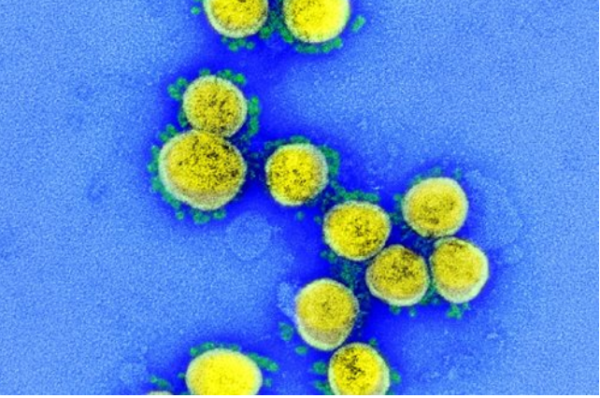[7.20] 전염성이 높은 오미크론 BA.2.75가 PH: expert에 진입할 때까지 '시간 문제'입니다.
컨텐츠 정보
- 20,461 조회
- 1 댓글
본문
마닐라 – 전염성이 높은 오미크론 아종 BA.2.75가 필리핀에 들어오는 것은 "시간문제"라고 한 전염병 전문가가 수요일에 말했습니다.
"이 변종은 인도를 포함한 10개 또는 12개 국가에서 발생하며, 저는 이것이 우리에게 일어나지 않을 것이라고 말할 수 없습니다. 가능성이 있습니다. 그것은 언제 이곳에 들어오느냐의 문제일 뿐입니다," 라고 산 라자로 병원의 성인 전염병 및 열대 의학 부서의 책임자인 뢴트겐 솔란테 박사가 말했습니다.
"우리는 또한 BA.5로 지금 하고 있는 것과 똑같이 준비해야 할 것입니다."라고 그는 공개 브리핑에서 말했습니다. 솔란테는 새로운 아변종이 출현하더라도 국경 통제를 강화하지 않겠다는 보건부의 결정에 동의한다고 말했습니다.
그는 새로운 아변형의 특성을 "말하기는 너무 이르다"고 덧붙였습니다.
"오미크론의 유전 나무를 보면, 그것들이 진화하면서 전염성이 증가하고 백신을 피하는 능력이 항상 증가하게 됩니다. 만약... 정말 심각한 질병을 일으킬 수 있다면 더 많은 자료를 기다리겠습니다. 우리가 변형을 볼 때, 그것이 중요한 의미입니다"라고 그는 말했습니다.
"센타우루스"라는 별명을 가진 이 아변종은 5월에 인도에서 처음 나타났고 그 이후로 미국, 영국, 독일, 호주 그리고 다른 여러 나라들로 퍼져나갔습니다.
세계보건기구의 수석 과학자 Soumya Swaminathan은 지난 주 UN 기구가 그 변종을 면밀히 추적하고 있지만 "분석할 수 있는 결과가 제한적"이라고 말했습니다.
"이 하위변종은 스파이크 단백질의 수용체 결합 영역에 몇 가지 돌연변이가 있는 것 같습니다... 그래서 우리는 그것을 봐야 합니다," 라고 그녀가 트위터에 올린 비디오에서 말했습니다.
그녀는 그 변종이 얼마나 면역을 잘 회피할 수 있는지 또는 그것이 얼마나 심각한지를 아는 것은 "아직 이르다"고 덧붙였습니다.
앙투안 플라호트 제네바대 글로벌 보건연구소 소장은 AFP통신에 BA.2.75의 확산은 유럽과 미국에서 파도를 몰고 온 BA.5 오미크론 아변종보다 전염성이 더 높을 수 있음을 시사했다고 말했습니다.
"그것은 인도에서 지배적인 변종이 되고 있는 것처럼 보입니다. 문제는 그것이 전 세계적으로 지배적인 변종이 될 것인가 하는 것입니다."
필리핀은 최근 전체 게놈 서열 분석에서 전염성이 높은 다른 하위 변종 BA.5, BA.4, BA.2.12.1의 사례를 더 많이 발견했습니다.
COVID-19 사례가 증가하고 있음에도 불구하고 낮은 의료 이용률로 인해 대부분의 시·군이 최저 경계 수준을 유지하고 있습니다.
보건부의 자료에 따르면, 그 나라는 지난 주에 14,640명의 새로운 COVID-19 사례를 기록했는데, 이는 한 주 전보다 약 40% 증가한 것을 반영했습니다.
This is the Original Article from ABC-CBN NEWS
MANILA — It is only "a matter of time" until the highly transmissible omicron subvariant BA.2.75 enters the Philippines, an infectious disease expert said Wednesday.
"This variant is in 10 or 12 countries including India and I cannot say it will not happen here to us. There's a possibility, it’s only a matter of when it will enter here," said Dr. Rontgene Solante, chief of the adult infectious diseases and tropical medicine unit of San Lazaro Hospital.
"We will also have to prepare just like what we're doing now with BA.5," he said in a public briefing. Solante said he agreed with the Department of Health's decision not to impose tighter border controls even as new subvariants emerge.
He added that it was "too early to tell" the characteristics of the new subvariant.
"If you look at the genetic tree of omicron, as they evolve there's always that increased transmissibility and the ability to evade vaccines. We will wait for more data if...it can really cause severe disease. When we look at variants, those are the important implications," he said.
The subvariant, nicknamed "Centaurus", first emerged in India in May and has since spread to around the United States, Britain, Germany, Australia, and several other countries.
The World Health Organization's chief scientist Soumya Swaminathan said last week that the UN agency was closely tracking the strain, but there were "limited sequences to analyze".
"This sub-variant seems to have a few mutations on the receptor binding domain of the spike protein... so we have to watch that," she said in a tweeted video.
She added that it was "too early to know" how well the strain can evade immunity or how severe it was.
Antoine Flahault, director of the Institute of Global Health at the University of Geneva, told AFP that BA.2.75's spread in India indicated it could be more transmissible than the BA.5 Omicron subvariant, which has been driving waves in Europe and the US.
"It seems to be becoming the dominant strain in India -- the question is will it become the dominant strain all over the world?"
The Philippines has detected more cases of other highly transmissible subvariants BA.5, BA.4, and BA.2.12.1 in its recent whole genome sequencing.
The majority of its cities and towns remain under the lowest alert level due to low healthcare utilization rates even as COVID-19 cases rise.
The country recorded 14,640 new COVID-19 cases in the previous week, reflecting about a 40-percent increase from a week before, data from the health department showed Monday.
관련자료
-
이전
-
다음



고혹자님의 댓글